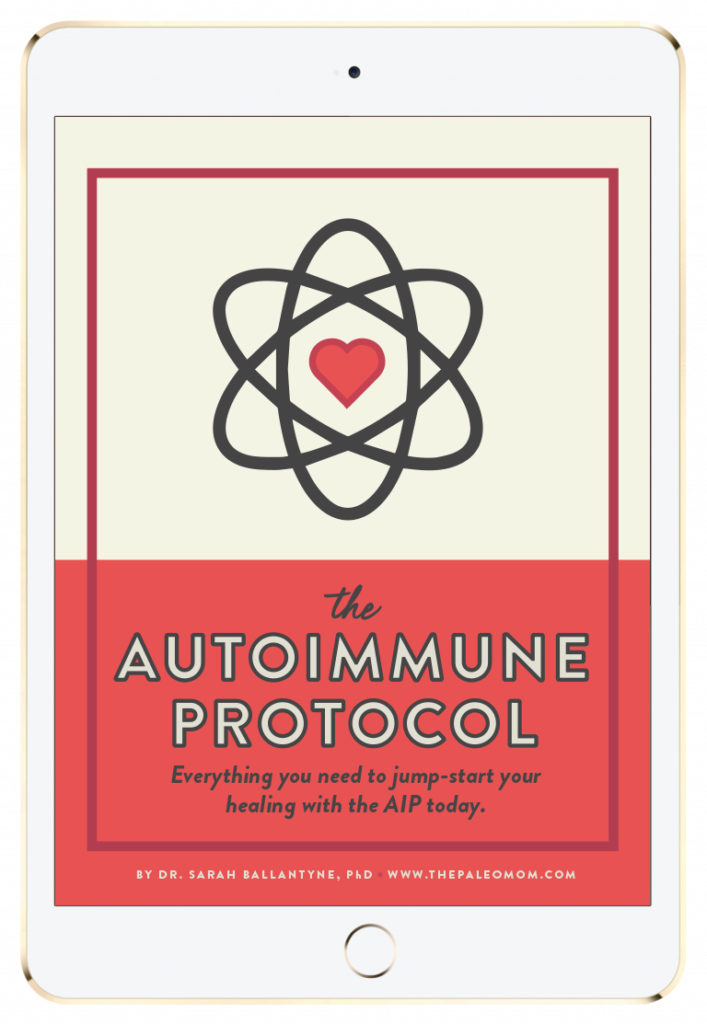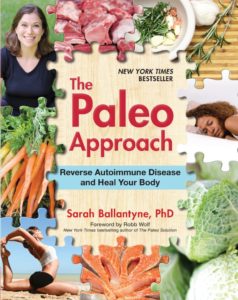 There are many topics that I researched extensively for The Paleo Approach that I’ve been meaning to write about for the blog for ages (the book just gives me a firm deadline). I have decided take some of these topics (especially the more blog-sized ones) and publish them as teaser excerpts for the book (also because I think this information should be here too).
There are many topics that I researched extensively for The Paleo Approach that I’ve been meaning to write about for the blog for ages (the book just gives me a firm deadline). I have decided take some of these topics (especially the more blog-sized ones) and publish them as teaser excerpts for the book (also because I think this information should be here too).
This excerpt is from Chapter 5, the chapter that details exactly what to eat including comprehensive food lists. Chapter 5 also talks about a variety of food quality and safety topics as well as practical implementation topics like variety, where to source the best quality food, and both tips and priorities for tight budgets.
I’ve decided to break the section on macronutrient ratios into two teaser excerpts. This excerpt discusses the optimal proportion of our diets that come from protein, fat and carbohydrates in more general terms. Next week, I will post the second part of this teaser which will specifically discuss ketogenic diets.
So, forgive the references to other chapters and page numbers with no number. While you’ll have to wait until the book is out in to read those sections, in the meantime, please enjoy this part of Chapter 5: The Paleo Approach Diet
Excited to read The Paleo Approach?
Want to help spread the word about my book? Please share this post and other teaser excerpts. Thank you!
The reason there is such a fierce debate about optimal macronutrient ratios (that is, what percentage of your diet should come from fat versus protein versus carbohydrates) is that, bottom line, when diets are composed of whole, nutrient-dense foods, health benefits accrue. This is exemplified by both hunter-gatherer and hunter-gatherer-farmer populations (also called horticulturalists), which are typically free of chronic illness. From the Eskimos, whose diet is approximately 50 percent fat, 35 percent protein, and 15 percent carbohydrate, to the Kitavans of Papua New Guinea, whose diet is approximately 20 percent fat, 10 percent protein, and 70 percent carbohydrate, macronutrients don’t seem to matter as much as food quality. These peoples—whose diets are very low in, if not devoid of, grains and very high in omega-3s—experience almost no cardiovascular disease (even though 70 percent of Kitavans smoke!) or immune-related diseases like asthma and autoimmune disease.
In terms of regulating blood sugar, diets as low as 10 percent carbohydrate and as high as 55 percent have had positive effects on insulin and leptin levels and sensitivity and on cardiovascular risk factors, provided that those carbohydrates come from low- to moderate-glycemic-load foods. Don’t forget that insulin is a normal hormone and performs many key roles in the body, including supporting the conversion of the T4 thyroid prohormone (thyroxine) to the active T3 thyroid hormone (triiodothyronine). Although this is especially relevant to people with hypothyroidism, T3 regulates metabolism and glucose homeostasis, which is important for everybody. In fact, inadequate T3 production causes insulin resistance, which might be why people who eat very low-carbohydrate and high-fat diets tend to have high fasting-blood-glucose levels. The wild card here is protein intake.
Fun Fact: Both hypothyroidism and hyperthyroidism cause insulin resistance.
Some experts say that moderate protein consumption (which really means low carb and low protein) has the most positive effects on insulin and leptin sensitivity (when you consume excess protein, it can be converted into glucose via gluconeogenesis, which can increase blood glucose and therefore insulin). By contrast, scientific studies prove that increasing protein consumption (from 15 percent to 30 percent, with carbohydrate consumption at a constant 50 percent) improves leptin sensitivity (see page ##). Can both be true? Yes. What this means is that eating to regulate blood sugar (by consuming low- and moderate-glycemic-load foods, basically vegetables and fruits) is more important than how much of your calories comes from particular macronutrients.
While regulating blood sugar is important, ditching all carbohydrates is not necessary. To reiterate, the Paleo Approach is not a low-carb diet, but it’s simply not a high-carb diet. So a little bit of insulin (which your body produces in response to eating fruits and vegetables) is beneficial, and there is plenty of research confirming that high-dietary-fiber intake optimizes insulin and leptin sensitivity, especially the fiber in low-glycemic-load foods like vegetables.
Save 70% Off the AIP Lecture Series!
Learn everything you need to know about the Autoimmune Protocol to regain your health!
I am loving this AIP course and all the information I am receiving. The amount of work you have put into this is amazing and greatly, GREATLY, appreciated. Thank you so much. Taking this course gives me the knowledge I need to understand why my body is doing what it is doing and reinforces my determination to continue along this dietary path to heal it. Invaluable!
Carmen Maier

Therefore, I don’t have an equation for the composition of your plate. I don’t care how much of your plate is filled with protein or vegetables and fruits or quality fats. I do care that you are eating plenty of vegetables (for the fiber, vitamins, minerals, and antioxidants) and enough protein (0.75 grams per kilogram of lean body mass, distributed throughout the day, at the very minimum). And I do care that your dietary fat comes from good-quality sources. Other than that, I want you to eat what makes you happy and put your calculator away.
Interested in learning even more about The Paleo Approach? This video from my YouTube Channel is just a quick tour (the book is so big that giving you a broad overview takes 13 minutes!) but you get to see just how comprehensive and detailed this book is.
Excited about my book? You can support me by ordering here. Also check out the announcement of the companion cookbook to The Paleo Approach (aptly titled The Paleo Approach Cookbook) HERE!
Citations
Afaghi, A., et al., Effect of low-glycemic load diet on changes in cardiovascular risk factors in poorly controlled diabetic patients, Indian J Endocrinol Metab. 2012 Nov;16(6):991-5
Badman, M.K., et al., A very low carbohydrate ketogenic diet improves glucose tolerance in ob/ob mice independently of weight loss, Am J Physiol Endocrinol Metab. 2009 November; 297(5): E1197–E1204
Brenta, G., Why Can Insulin Resistance Be a Natural Consequence of Thyroid Dysfunction?, J Thyroid Res. 2011; 2011: 152850
Chearskul, S., et al., Effect of weight loss and ketosis on postprandial cholecystokinin and free fatty acid concentrations, Am J Clin Nutr. 2008 May;87(5):1238-46
Dressler, A., et al., Type 1 diabetes and epilepsy: efficacy and safety of the ketogenic diet, Epilepsia. 2010 Jun;51(6):1086-9
Fraser, D.A., et al., Reduction in serum leptin and IGF-1 but preserved T-lymphocyte numbers and activation after a ketogenic diet in rheumatoid arthritis patients, Clin Exp Rheumatol. 2000 Mar-Apr;18(2):209-14
Fraser, D.A., et al., Serum levels of interleukin-6 and dehydroepiandrosterone sulphate in response to either fasting or a ketogenic diet in rheumatoid arthritis patients, Clin Exp Rheumatol. 2000 May-Jun;18(3):357-62
Ho, K.J., et al., Alaskan Arctic Eskimo: responses to a customary high fat diet, Am J Clin Nutr. 1972 Aug;25(8):737-45
Jennings, A.S., Regulation of hepatic triiodothyronine production in the streptozotocin-induced diabetic rat, Am J Physiol. 1984 Oct;247(4 Pt 1):E526-33
Kim do, Y., et al., Inflammation-mediated memory dysfunction and effects of a ketogenic diet in a murine model of multiple sclerosis, PLoS One. 2012;7(5):e35476
Lindeberg, S., et al., Determinants of serum triglycerides and high-density lipoprotein cholesterol in traditional Trobriand Islanders: the Kitava Study, Scand J Clin Lab Invest. 2003;63(3):175-80
McMillan-Price, J., et al., Comparison of 4 diets of varying glycemic load on weight loss and cardiovascular risk reduction in overweight and obese young adults: a randomized controlled trial, Arch Intern Med. 2006 Jul 24;166(14):1466-75
Reimer, R.A., et al., Satiety hormone and metabolomic response to an intermittent high energy diet differs in rats consuming long-term diets high in protein or prebiotic fiber, J Proteome Res. 2012 Aug 3;11(8):4065-74
Weigle, D.S., et al., A high-protein diet induces sustained reductions in appetite, ad libitum caloric intake, and body weight despite compensatory changes in diurnal plasma leptin and ghrelin concentrations, Am J Clin Nutr. 2005 Jul;82(1):41-8
Hey, look which book is an Editor’s Pick on Amazon for October!!!!











